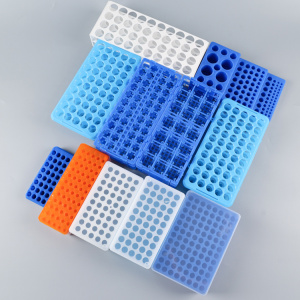Analysis of the reasons for inverted culture after inoculation of microbial culture dishes
Why turn the plate upside down and put it in the incubator? Many new laboratory technicians leave a message or send a message to the editor in the background to ask what is the reason for this?
The summary of my own practical experience is:
1. First of all, it is convenient to take and place
2. Inverted culture can prevent contamination: In order to prevent the distilled water appearing on the petri dishes cover from flowing onto the petri dish during upright cultivation, resulting in colonies forming into pieces, which cannot be counted or separated. It also reduces the possibility of contamination.
3. Easy to observe and count: When the plate is inverted for microbial culture, the colonies growing on the surface of the medium will not spread too quickly, which is conducive to identifying the characteristics of the colonies during observation.
4. Facilitate the appearance of colonies: After inversion, there will be no residual water on the surface of the agar. Otherwise, if there is water, bacteria will grow into a biofilm on the surface, and colonies will be difficult to appear.
In order to make the answer to the question more specific and professional, I will use the following article to learn with you!

Reasons for Plate Inversion Before Inoculation
After pouring the plate and waiting for the plate to cool and solidify (about 5~10min), turn the plate upside down so that the lid of the dish is on the bottom and the bottom of the dish is on the top.
1. Avoid separation of the culture medium from the petri dish
After the plate is poured, because the medium still has residual temperature and has just solidified, the water is relatively large and the humidity is high, and some water droplets are condensed on the lid of the plate. If the plate is placed upright, the condensed water droplets will flow into the medium, which will not only easily cause pollution, but also cause the medium and the culture dish to separate and easily slide, which is one of the reasons for the poor adhesion of the medium; The water in the medium is relatively large when the plate is plated. During the inoculation and cultivation, the bacteria in the medium will flow around, and the stretched biofilms are connected together and cannot be counted.
2. The tablet is easy to take upside down
When opening the incubator to take and place the plate, if you accidentally touch the lid of the culture dish that is being placed, it is easy to open the lid; and the inverted plate can be kept in its original state when it is taken, and it is not easy to separate the bottom and the lid of the dish, so as to avoid bacterial contamination in the environment.
3. Prevent bacteria from contaminating the plate during the cultivation process
During inverted culture, since the air in the plate is not easy to flow, the infection of foreign bacteria can be reduced as much as possible, and the contamination of the medium and culture by the bacteria can be avoided. Through experimental observation, it is found that if the plate is placed upright, the surrounding of the plate is easy to grow bacteria colonies.
4. Conducive to the enrichment of nutrients, easy to observe and count
When the plate is inverted for microbial culture, under the influence of gravity, on the one hand, the nutrients in the medium are mainly concentrated on the surface of the medium and the sub-layer below the surface, which is conducive to the growth of microorganisms; on the other hand, the colonies growing on the surface of the medium are relatively It will not spread too fast, and it is helpful to distinguish the characteristics of the colony when observing.



